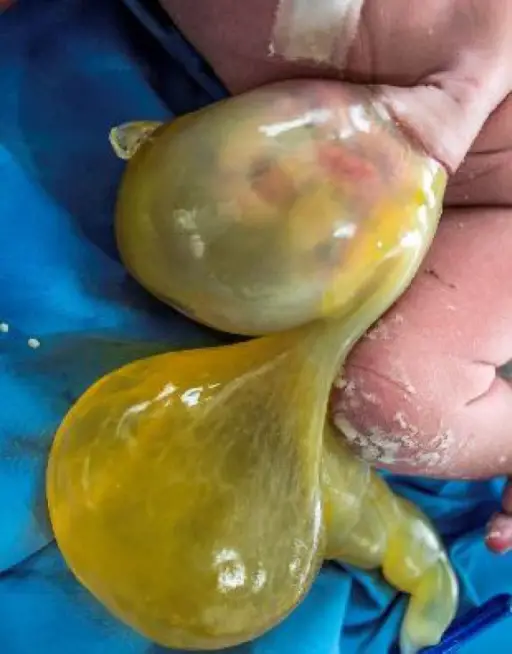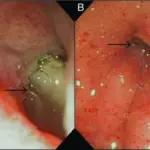Omphalocele is a birth defect of the abdominal belly wall. The infant’s intestines, liver, or other organs stick outside of the belly through the belly button. The organs are covered in a thin, nearly transparent sac that hardly ever is open or broken.
What is the Pathology of Omphalocele?
The pathology of omphalocele is:
-Etiology: The cause of omphalocele is a change in the genes or chromosomes. Omphalocele might also be caused by a combination of genes and other factors, such as the things the mother comes in contact with in the environment or what the mother eats or drinks, or certain medicines she uses during pregnancy.
-Genes involved: CDKN1C mutation.
-Pathogenesis: The sequence of events that lead to omphalocele are: at early fetal life much of midgut is temporarily herniated outside the abdomen at the umbilicus. The midgut later re-enters the abdomen and opening of abdominal wall is closed. Failure for midgut to return and re-enter the abdomen and omphalocele is formed.
-Histology: The histology associated with omphalocele shows herniated bowel and liver.
How does Omphalocele Present?
Patients with omphalocele typically in males present at age range of 6-10 weeks of pregnancy. The symptoms, features, and clinical findings associated with omphalocele include abdominal contents sticking out through the belly button area.
How is Omphalocele Diagnosed?
Omphalocele is diagnosed by by physical exam and ultrasound.
How is Omphalocele Treated?
Omphalocele is treated by surgery.
What is the Prognosis of Omphalocele?
The prognosis of omphalocele is good.



